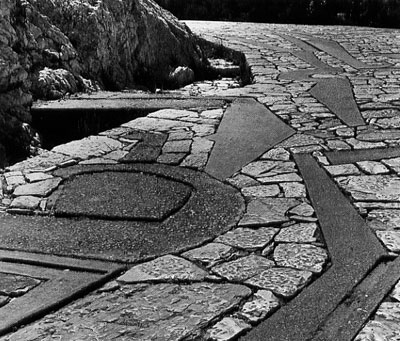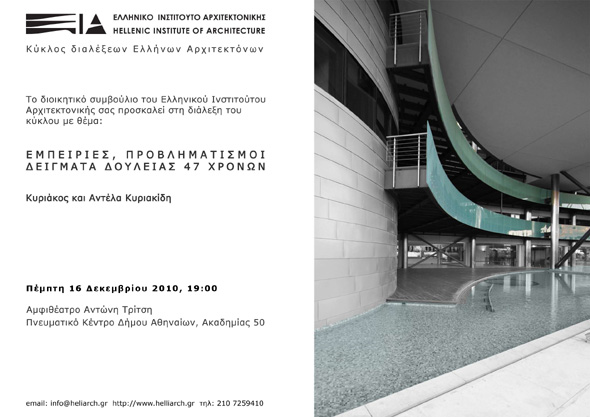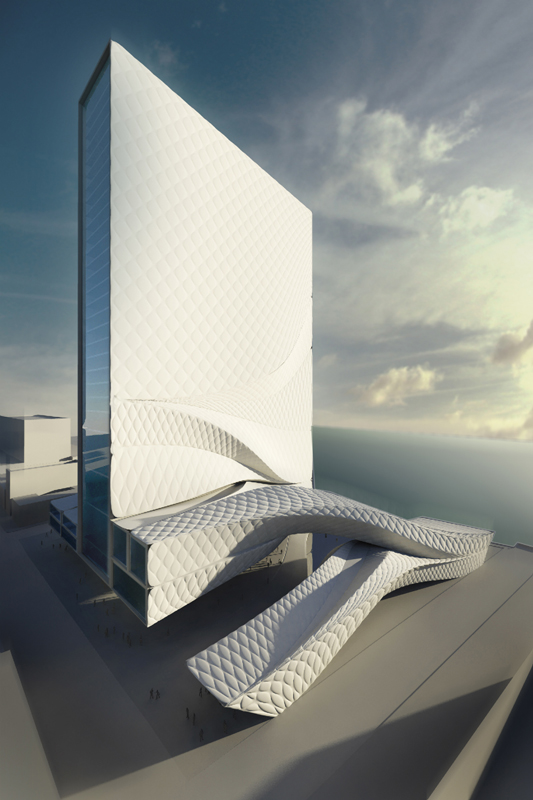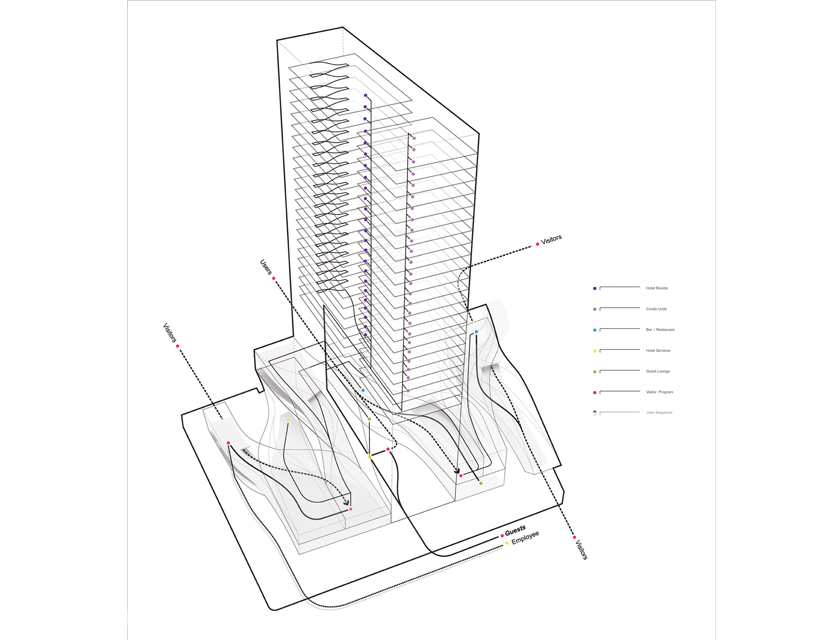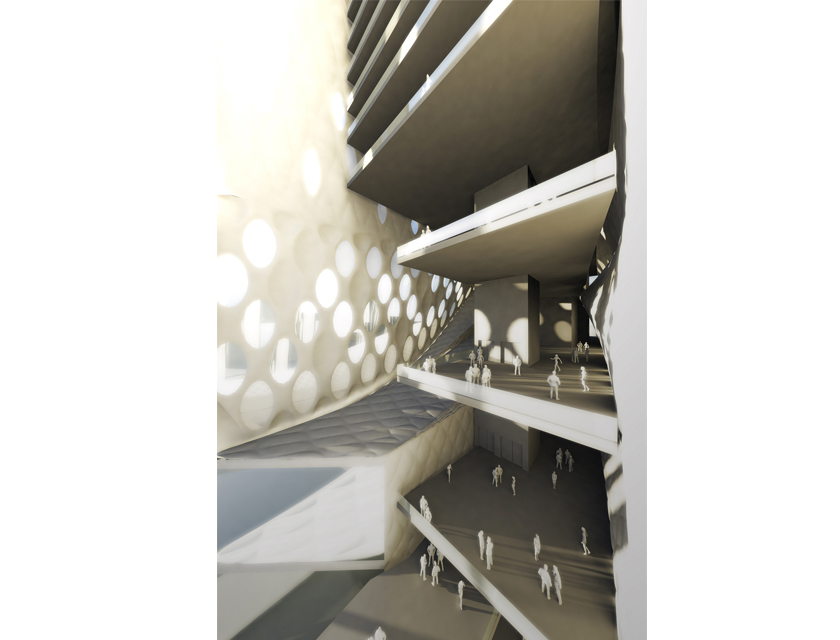Δημήτρης Πικιώνης 1887- 1968
Κυριάκος και Αντέλα Κυριακίδη 47 χρονών δείγματα δουλειάς
Gator Boots is a Mixed-use Development that Rearranges Visual Expectations, Forms and Program
“Purgatorio – Καθαρτήρι” της Mariaelena Palloni
Marcel Wanders part 2
Marcel Wanders presents the Couture Collection of Wallpaper for Graham & Brown.
Comprising of eight stunning designs, Alice ,Grace , Kelly , Suzanne , Stella , Isabella ,Audrey , Henry , in a mix of strong colorways and subtle shades. The collection is printed on Graham & Brown’s unique clay-coat papers and offers a wonderful matt finish accentuated with metallic and gloss embellishments.
It is also paste-the-wall on nonwoven paper for ease of application and removal.
Marcel Wanders is the internationally renowned designer who has designed for B & B Italia, Bisazza, Poliform, Boffi and Moooi where he is art director and co-founder.
Todd Bracher

Alodia
Striking a perfect equilibrium between the tubular base and steel seat, Todd Bracher’s Alodia distills stooldom down to linear harmony.

Read more: http://www.dwell.com/people/todd-bracher.html?tab=designs&c=y#ixzz12BFAAyKV
MARCEL WANDERS part 2
“It’s a mess up here.” Marcel Wanders is talking about his brain, and the necessary disorder of an open mind in design. “Philosophy is not one truth, but thousands of truths. You don’t have to believe in just one thing. When you choose one idea, you close yourself to the rest.”
It sounds chaotic, but there’s nothing haphazard about the sleekly seductive products Wanders designs for the likes of Moroso and Cappellini from his canalside studio in Amsterdam. Sitting here, we’re surrounded by them: Big Shadow lamps, Carbon chairs, and shelves stacked with Knotted chair models and gold-plated Egg vases. For all their variety, they—along with their creator—share a disarmingly idiosyncratic presence, a kind of enigmatic exuberance.
At 42, Wanders has lost the lean and hungry look of his Boy Wonder period, when he first won the world’s attention as a member of Droog Design, the tongue-in-cheek Dutch collective he calls “the Memphis of the 1990s.” At Droog’s epochal 1993 Milan furniture fair debut, he showed pieces like the Set Up Shades lamp, an austere yet suggestive column of white shades.
Few could have guessed at the prolific, polymorphous output ahead. Fast-forward 12 years, and 2005’s Milan fair was packed with products designed by Wanders for half a dozen major companies, including Poliform, Alessi, and Flos (as well as the collection of his own company, Moooi), ranging from a simple spoon with a twist (naturally) to intricately carved chairs and tables. The scope of his work has expanded too, with interiors projects like Lute Suites, a row of 17th-century Amsterdam houses converted into hotel rooms. “Interiors offer me a chance to look at the products I’ve designed and test their usability,” he says.
The idea of Wanders testing the utility of his pieces might seem to be at odds with his reputation as a fierce opponent of functionalism. “I don’t want to make furniture that’s not functional,” he says. “But the problem with modern design is that it defines functionality too narrowly. The more functional a chair, the less we feel it in our butts. The ‘I don’t know it’s there, so I don’t have to care’ approach is fine with a pacemaker. But a good chair you feel in your heart.”
His own latest chair, in the New Antiques range for Cappellini, is a detailed, turned object, made modern by its proportions, slender lightness, and color. “Why should we still live in a design culture that looks to the 1920s?” asks Wanders. “With the New Antiques, I’m saying it’s okay to go back beyond the limitations of what design has become. The design industry is for people, after all—not the other way around.”
Wanders, like other Droog designers, has always had this impulse to strip design of its elitist tendencies, to work with forms that are universally understood—he calls them “archetypes”—and to use old things in a novel way, rather than straining for something new. Major themes in his work are handicrafts, as in the iconic Ming vase, which retains all the traces of its making, and in the baroque detail of his Lace table. All of this work indicates Wanders’s interest in rescuing the history of objects. “Design is way too modern,” he says. “People cannot cope. Modern composers make music we can’t listen to. We push the boundaries too hard, and the public loses track. The world is too focused on youth—I want to remember that I have a mother as well as a daughter. I want to make work that looks to the future, but also back to the past. I want to use new techniques, but also reintroduce that lost quality of beauty.”
Wanders has the anachronistic devotion to beauty of a Romantic poet, which he says he deliberately cultivated. “When I was first at design school,” he recalls, “I was theoretical and dogmatic. I did a design for a clock I was proud of, and my tutor said, ‘Clever design—too bad it’s so ugly!’ I was shocked, but when I thought about it, I decided there was no reason why I couldn’t make beautiful things.
“So I put a blanket down in the middle of my room, and every day I’d put things on it, making harmonious compositions of objects. I worked on it two or three hours a day for about nine months, but no one ever saw it. That’s how I studied the poetic part of design.” As he tells the story, Wanders rearranges the coffee cups and books on the table. His love for these assemblages, which he calls haikus, led directly to his Haiku plate series for B&B Italia. He says they are all about finding a “line”—a sequence, or implied narrative.
Wanders designs, he says, out of a love for people: “I see people and I just want to be there for them; I want to help them live their dreams.” Wanders combines quixotic idealism and an endearing naiveté with the business acumen and ambition he has demonstrated since starting his first company, WAAC’s, in 1993, “to make real things, not just conceptual objects.” This is a transition that Droog itself has yet to successfully navigate, but Wanders did it alone, and fast. He quickly outgrew WAAC’s, started Wanders Wonders, and then, in 2001, set up Moooi (the Dutch word for beautiful, but “with an extra O for extra beautiful”), which has a diverse product range based on collaborations with Jurgen Bey, Ross Lovegrove, Jasper Morrison, and younger talents like Maarten (Smoke) Baas.
An air of controversy has surrounded Wanders ever since he was thrown out of his first design school after one year. He still doesn’t know why. “You need a thick skin,” he comments, with uncharacteristic understatement. Although widely regarded as one of the most interesting designers working today, he still has his detractors. Harsher critics find his stylistic variety perplexing, others find him sensationalist, “the Damien Hirst of furniture,” for modeling his Egg and Snotty vases on eggs in a condom and airborne phlegm, respectively. Yet the Airborne Snotty vase is at the heart of Wanders’s oeuvre, contriving as it does to create beauty out of the grotesque. Much of Wanders’s work has this paradoxical power, like an oxymoron made visible.
Perhaps Wanders’s theatrical presence, combining elements of showman and shaman—he once appeared at an exhibition as Saint Sebastian—sometimes misleads observers into writing off his work as smoke and mirrors. “My persona is very calculated,” he admits.
Wanders’s idol is Philippe Starck, and he’s already shown the potential to equal—and perhaps surpass—him. “Where I used to think in terms of chairs and vases, now it’s big concepts like quality of life. If I have any basic motivation, it’s to inspire people to make their life a masterpiece. So my biggest work is my life—and I take that seriously. But not too seriously.”
Read more: http://www.dwell.com/articles/profiles-marcel-wanders.html#ixzz12BCaz08i

